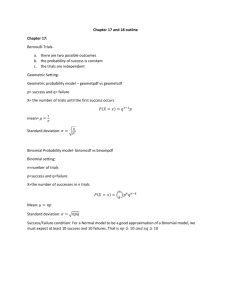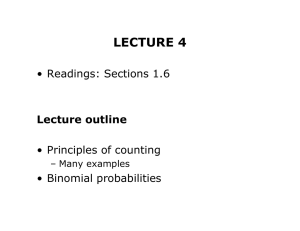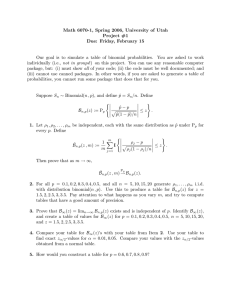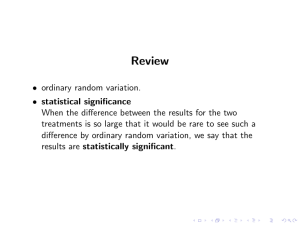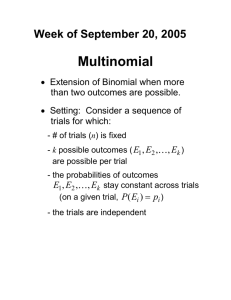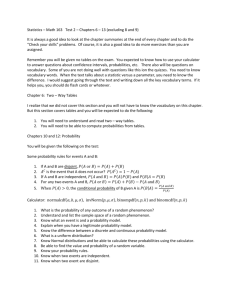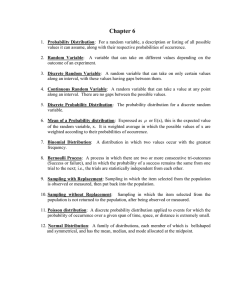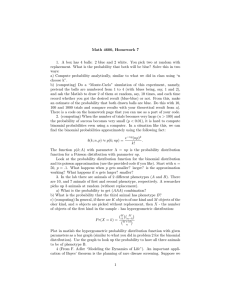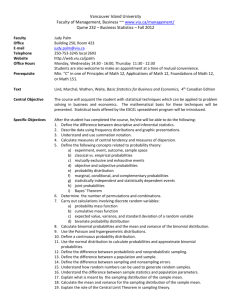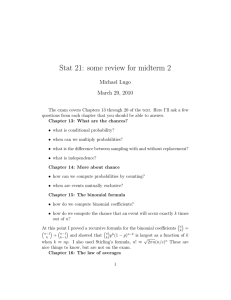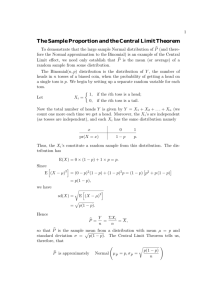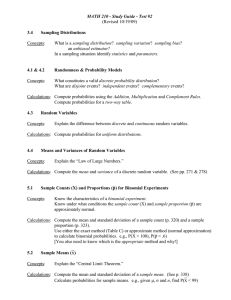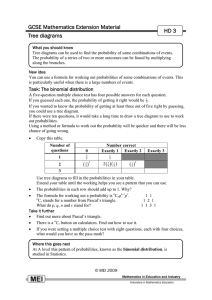Distinguishing between Different Discrete Probability Distributions
advertisement
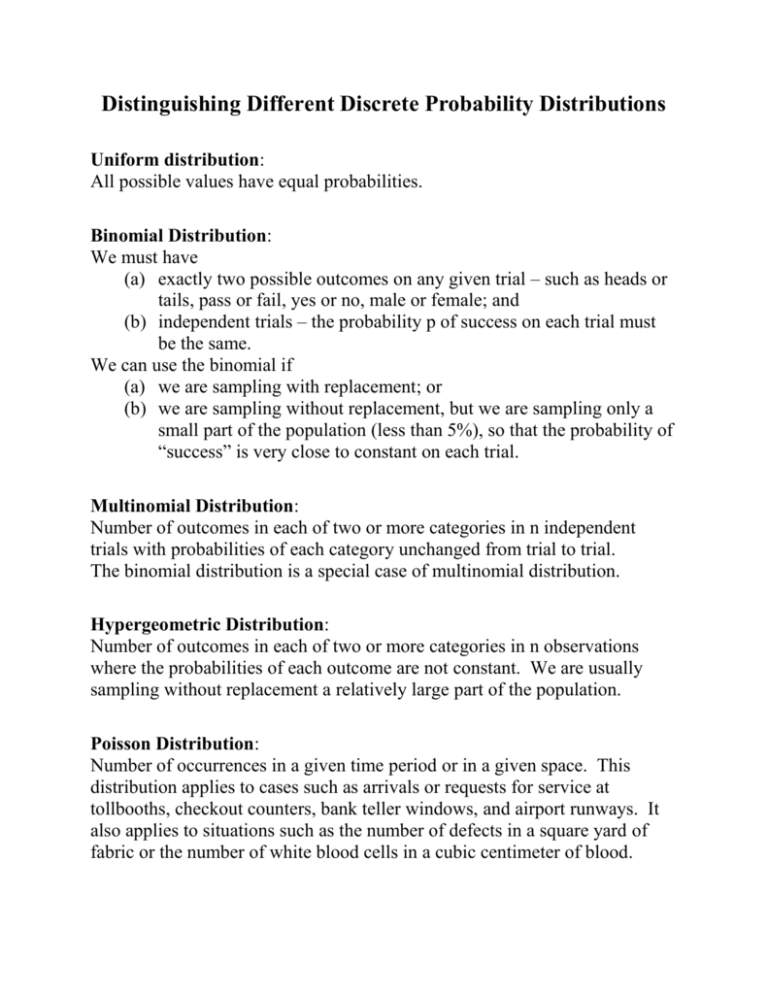
Distinguishing Different Discrete Probability Distributions Uniform distribution: All possible values have equal probabilities. Binomial Distribution: We must have (a) exactly two possible outcomes on any given trial – such as heads or tails, pass or fail, yes or no, male or female; and (b) independent trials – the probability p of success on each trial must be the same. We can use the binomial if (a) we are sampling with replacement; or (b) we are sampling without replacement, but we are sampling only a small part of the population (less than 5%), so that the probability of “success” is very close to constant on each trial. Multinomial Distribution: Number of outcomes in each of two or more categories in n independent trials with probabilities of each category unchanged from trial to trial. The binomial distribution is a special case of multinomial distribution. Hypergeometric Distribution: Number of outcomes in each of two or more categories in n observations where the probabilities of each outcome are not constant. We are usually sampling without replacement a relatively large part of the population. Poisson Distribution: Number of occurrences in a given time period or in a given space. This distribution applies to cases such as arrivals or requests for service at tollbooths, checkout counters, bank teller windows, and airport runways. It also applies to situations such as the number of defects in a square yard of fabric or the number of white blood cells in a cubic centimeter of blood.

